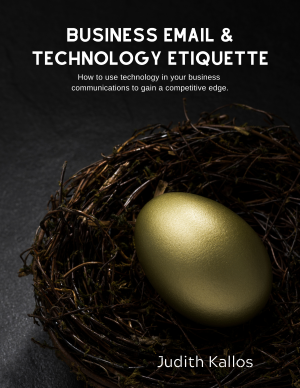Business Email Etiquette Basics

Professionals communicate professionally regardless of the mode of communication. If you are a consummate professional, you know that putting your best foot forward with every touch is just what you do.
You must make an impression regarding your business email communications, proving you are a credible professional enterprise. In addition, you want to be viewed as a partner who will make communications easy and a pleasure to do business with.
You have only one chance to make a first impression, which is invaluable to building trust and confidence. So how do you do that? Read on.
Here are the critical Business Email Etiquette variables you must apply to every commercial email. These are the issues business owners, their employees, and Netrepreneurs need to be aware of in their day-to-day online communications to ensure the best possible results.
Professional Behavior on the Job
Many underestimate the seriousness of using your email, company email address, or employer’s technology. However, part of your job performance responsibilities is not wasting valuable business time on distractions.
For example, you send non-business-related emails, jokes, forwards, or commentary on company time. Doing these things reflects a lack of professionalism.
Visiting unnecessary websites for your job responsibilities will reflect a lack of respect for your employer. While on company time, do not assume you have any privacy when using company resources and equipment.
The Subject Field
The Subject field is the window into your email. What you type in this field can determine if the recipient will open your email. For example, based on a request through your site or otherwise, new contacts want to be recognized as important and worthy of your time to respond to their demands.
Visual judgments are made when we scan our inboxes. I bet you do it, too. Craft a relevant Subject field to help avoid being misidentified as spam. A short Subject that indicates that your email is a response to their inquiry.
Typos, all caps, or all small case can lend to an unprofessional impression. Or that you may be a spammer.
Level of Formality
Avoid the prevailing assumption that email, by its very nature, allows you to be informal in your business email communications. Only time and relationship-building efforts determine when you can offer a more relaxed tone in your business email.
PRO TIP: A good rule of thumb is constantly communicating as if your email is on your company letterhead. This means black text and standard fonts. No acronyms, and typing total words and sentences as well. (For example, u vs. you.)
After all, this is your business image you are branding.
Addressing
Initially, address new contacts with the highest level of courtesy: Hello, Mr. Anderson, Dear Ms. Jones, Dr. Osborne, etc. At some point, they may very well comment, “call me Andy” or “you can call me Diane.”
You can also pick up clues as to when you can be more relaxed. Again, this is easy to do by noting how contacts approach you and how they sign off.
Most business people do not mind being called by their first name. However, in a global economy, using that name too soon can be perceived as taking premature liberties in the relationship.
To:, From:, BCc, Cc Fields
In the To: field, type your contact’s formal name. John B. Doe – not john b doe or JOHN B DOE. Use proper case and punctuation.
In the From: field, note your full name formally typed. For example, Jane A. Jones. Not Jane A. Jones or JANE A JONES. The latter two give the perception of a lack of education or limited experience with technology.
BCc: Use this field when emailing a group of contacts who do not personally know each other. It is considered a breach of privacy to list an arm’s length list of email addresses in the Cc or TO fields of contacts who do not know each other or have never met, and doing so is conducive to publishing their email addresses to strangers.
When forging partnerships, visibly listing an email address with a group of strangers is a subtle indication that the sender is unaware or concerned about privacy issues. What other privacy issues do you not respect or understand?
Cc: use this field when a handful of contacts are involved in a discussion. They all need to be on the same page.
These contacts know each other or have been introduced. Therefore, they will have no problem exposing their email addresses to the parties involved.
If you are unsure if a business associate would mind their address being made public, don’t. Contact information is an essential commodity, one you want to make clear you will value and respect.
Reply to All
Use this button with great discretion. Consider whether “all” must know your reply to conduct business.
Never use this button to CYA or e-tattle on a coworker or colleague. This approach only makes you appear petty, which is not a good look.
Formatting
Refrain from using formatting in your day-to-day business email communications. For example, don’t do it when emailing for commercial gain unless you would type something in bold crimson letters on business letterhead.
In this case, less is more. You want your message to get across without distracting formatting or unnecessary embedded images, which can increase your potential spam score.
Even something as simple as using a different font could make your emails more challenging to read. Did you know if the other side doesn’t have that particular font you designated for email on their system, it defaults to their system’s font?
Sticking with your email software’s default font selections is a good idea based on what is universally used and user-friendly.
Attachments
To display that you understand technology is part of forming an online business partnership. For example, a misstep such as sending a 10M PowerPoint presentation that your contact didn’t request. What if you fill up their inbox? What about their data resources?
They probably won’t be able to open the file if they don’t have PowerPoint. It is wise not to assume your potential customers have the same software or data allowance as you. Ask first to confirm.
When emailing a file (or combination of files) over 500,000K in size, use a zip or compression utility to minimize the download size. It’s easy enough to do.
Want to make an impression? Reflect uncommon business courtesy by asking first before sending large files. You can also confirm they have the same software and version you do now.
Then, ask what the best time of day is to send the file(s) and follow through.
The last thing you want to do is send large attachments without warning on weekends or after business hours unless you arrange to do so in advance.
Using Previous Email for New Correspondence
To provide the perception of laziness, find a previous email from your contact and hit reply. Then, communicate about something utterly irrelevant to the old email’s subject.
You always want to start a new email for a new subject. Get in the habit of adding your contacts to your address book so you can create a new email with one click.
PRO TIP: When ongoing conversations change direction, change the Subject field to reflect the new topic focus.
Down Edit Your Replies
Avoid hitting reply and then start typing. This is referred to as top posting. We want to down-edit.
Down-editing is a skill those you communicate with will appreciate. It lends clarity to your communications while showing you respect for their time.
You remove clutter by deleting parts of the previous email that no longer apply to your response (including email headers and signature files). In addition, Down-editing allows you to reply point by point, which keeps the conversation on track with fewer misunderstandings.
Common Courtesy
Hello, Hi, Good Day, Thank You, Sincerely, Best Regards. The intros and sign-offs that are a staple of professional business communications should also be integrated into your email communications. Failure to do so could misinterpret your messages as demanding or terse.
Always include a salutation and sign-off that displays your name with every email. Again, think of business letterhead.
Courtesy also mandates that you communicate as an educated adult—type in complete sentences with proper sentence structure, not all caps or all small case.
Proper capitalization and punctuation are necessary to appear to be an educated professional. All caps or small case smacks of either lack of education, tech/business savvy, or laziness.
None of these are positive for instilling confidence. Or encourages others to want to do business with you.
Signature Files
Keep your signature files short and sweet. No more than 5-6 lines. We don’t want to be viewed as egocentric. Therefore, limit your signature to your name, website link, company name, slogan/offer, or phone number.
That’s why you include a link to your website. The recipient can access all your contact information from A to Z there. That is what your website is for.
PRO TIP: When typing your website address in emails and your signature file, include the “https://.” This ensures the URL is recognized as clickable regardless of the user’s software or platform.
Respond Promptly
You should do your best to respond to your business communications as quickly as possible. However, do not underestimate this vital customer service touchpoint.
If you don’t respond promptly, you seem unorganized or unconcerned. Worse, you risk being outperformed by your competitors, who understand the importance of appearing efficient and on the ball.
Rise Above the Majority
These fundamental issues will undoubtedly allow your business communications to rise above the majority of those who do not take the time to understand and master these topics.
While texting isn’t email, I have an article for you to review since more and more business folks use texting in their business communications.
READ: Business Texting Etiquette: 10 Tips for Professionals
When forging new business relationships and solidifying established partnerships, the professionalism and courtesy you convey in your email communications will always attract clients, especially compared to your competition, who may be anemic, uninformed, or lazy.
And this is just the tip of the iceberg. Check out my eBook on Business Email Etiquette & Proper Technology Use for the full scoop, which you can have on hand to reference as needed. eBook sales go directly to supporting this website.
Regardless of the mode of communication used, professionalism and courtesy never go out of style in business. Instead, they benefit your bottom line.

